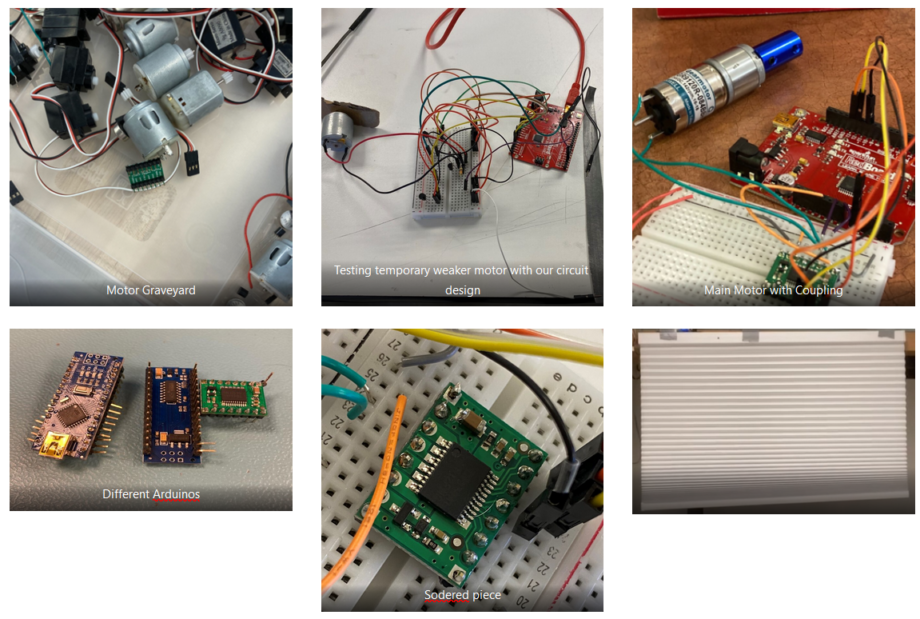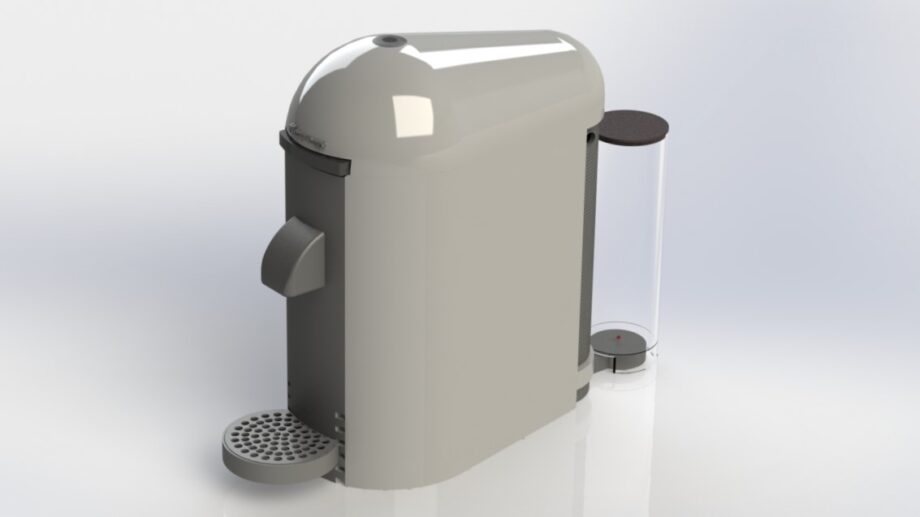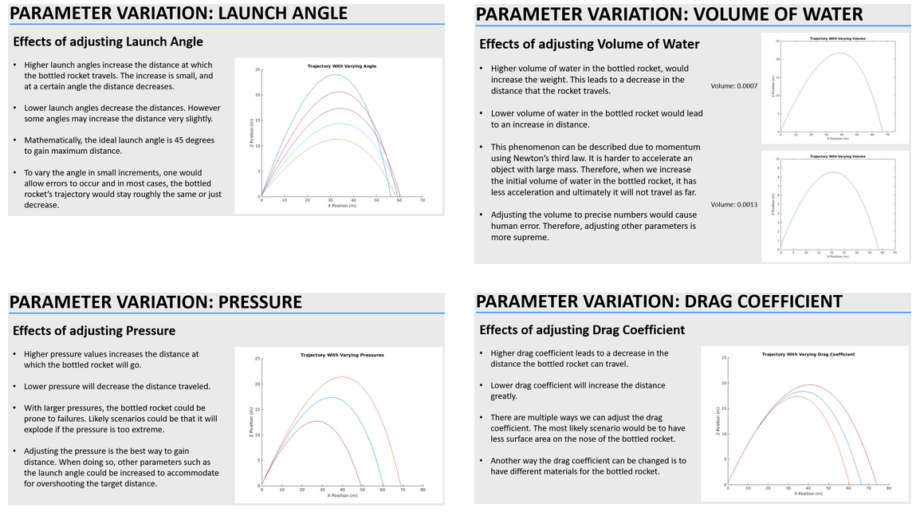I conducted a computational fluid dynamics (CFD) analysis on a bike model, using SolidWorks to simulate airflow and determine drag forces. The first step in the process involved adjusting a pre-existing bike model that I downloaded from GrabCAD. After importing the model into SolidWorks, I mated it coincident to a ground plate in an assembly and simulate the bike’s interaction with the environment.
For the simulation, I set the initial velocity to 15 m/s, which is based on the average speed of a cyclist. This speed is representative of real-world conditions, ensuring that the simulation results reflect realistic drag forces that a cyclist would experience under normal riding conditions. After defining the bike’s position and velocity, I added appropriate boundary conditions to the simulation. These boundary conditions specify factors like the bike’s surface properties and the air’s flow characteristics, ensuring accurate simulation of the interaction between the bike and the surrounding airflow.
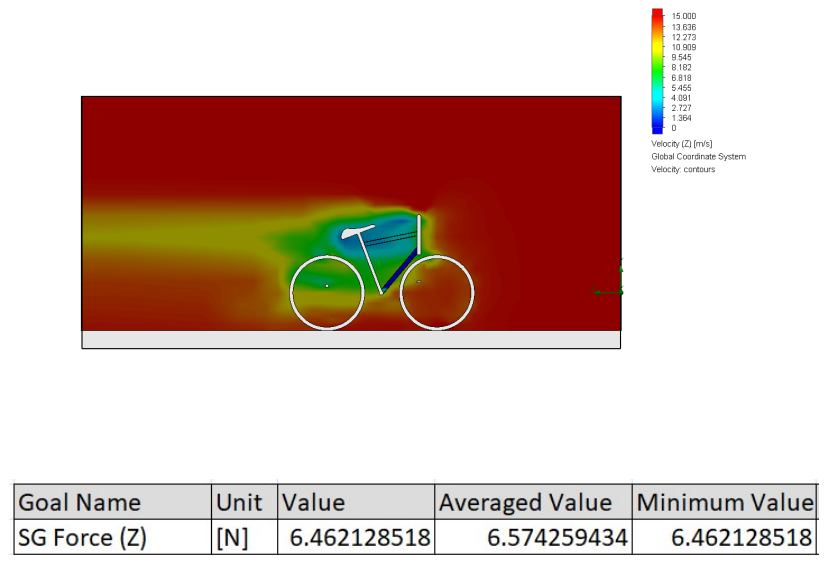
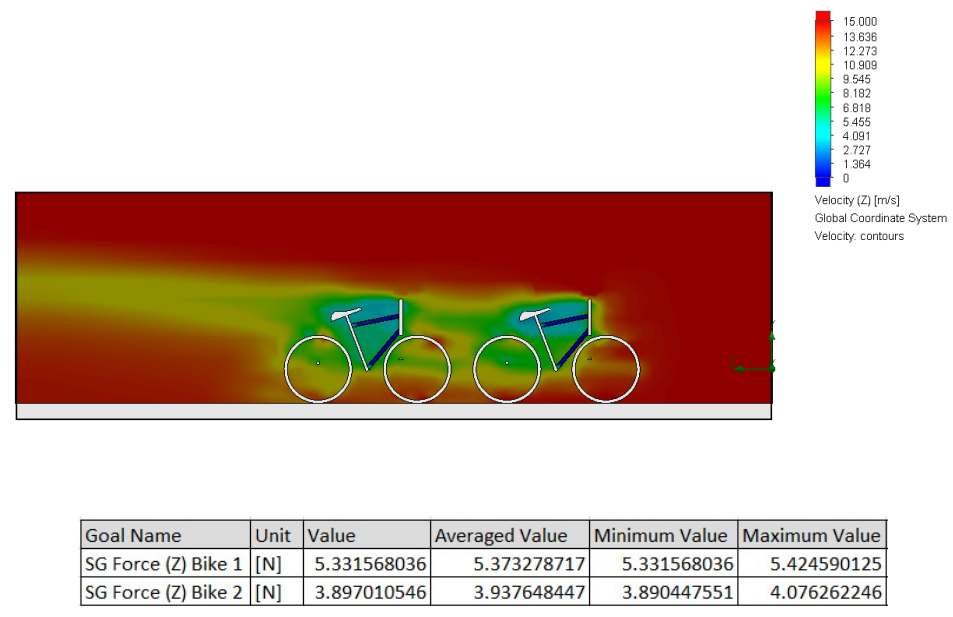
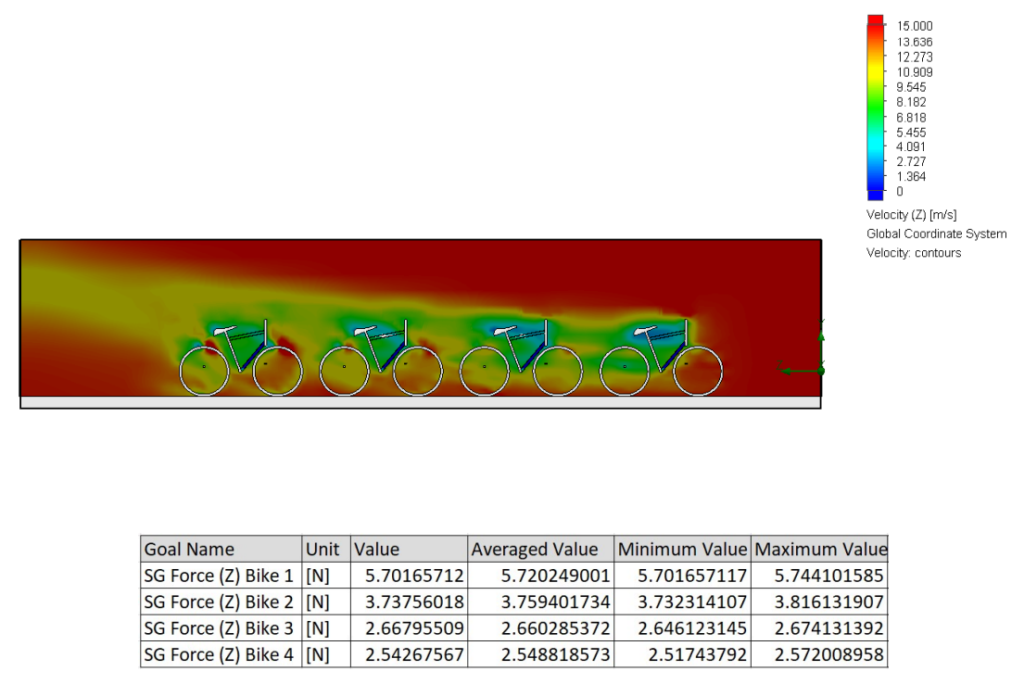
The data suggest that both the leader of a pack of cyclists as well as the cyclists in the to the rear benefit from drafting. Additionally, we see that drag is reduced further for the rear cyclists as more join the pack. So, as we see in the real world, it is logical for a few large packs of cyclists to form rather than several small packs, as this will decrease the drag force the most for the largest amount of cyclists. Due to the symbiotic relationship of drafting, teams could most effectively use this knowledge to their advantage by rotating the front member of the pack to the rear and taking advantage of the speed boost due to reduced resistance to “slingshot” fellow team members to the front of the pack, therefore allowing the previous leader to perform less work while maintaining the same speed.
By simulating how air flows around the bike at the specified velocity, I can estimate the drag force and identify areas where aerodynamic improvements can be made, such as reducing resistance or optimizing the frame’s geometry. This process involves running the simulation through SolidWorks’ integrated CFD tools, which use complex algorithms to solve fluid dynamics equations and predict the drag force, turbulence, and pressure distribution around the bike. The results of the simulation will help inform design decisions, providing insights into how aerodynamic changes can improve overall performance and efficiency.

